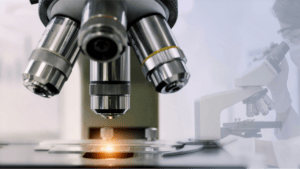Microcap with a Blue-Chip profile: Trajan Group is growing through key acquisitions, partnerships and collaborations

TRJ is twice the size today in revenue and EBITDA than when it listed on ASX in 2021 Pic: Getty Images
- Acquisitions, collaborations, and partnerships driving growth of Trajan Group Holdings
- Trajan develops and manufactures scientific instruments, devices, and solutions for healthcare, food, pharmaceutical and environmental analysis
- Recent global interest in PFAS measurement is a key opportunity for Trajan to leverage with proprietary ‘point of sampling’ measurement platform
- FY23 was Trajan’s 12th consecutive year of growth with full year FY23 revenue up 50.7% to ~$162m
Special Report: Trajan Group Holdings is progressively building up its capabilities, demonstrating consistent growth and profitability, forging partnerships, and collaborations to develop its global reputation for building industry leading solutions.
Specialising in development and manufacturing of analytical science instruments, devices, and solutions for healthcare, food, and environmental analysis Trajan Group Holdings (ASX:TRJ) is a microcap with the profile of a blue chip.
Put somewhat simply, TRJ designs and manufactures a range of physical components, consumables and laboratory automation platforms that combine to enable laboratories to measure samples and deliver analytical information.
TRJ full year FY23 revenue exceeded $162m, up 50.7% on the prior corresponding period (pcp) with normalised EBITDA exceeding $21m, a rise of 67.9% on pcp.
“This growth reflects our commitment to building a healthcare company of substantial size and scale to have a global presence,” chairman John Eales told investors at its AGM in early October.
FY23 was the 12th year of growth for TRJ, which was established in October 2011 by CEO Stephen Tomisich and his wife Angela, who both have applied science backgrounds and decided around the kitchen table to acquire their first pathology consumables businesses.
Headquartered in Ringwood, Melbourne, TRJ now operates seven manufacturing sites across the US, Australia, Europe and Penang, Malaysia with customers in more than 100 countries.
It is twice the size today, in both revenue and EBITDA, than when it listed on the ASX in 2021, consistently meeting or exceeding financial guidance.
The future role of analytical data
Tomisich says the TRJ vision is around the role analytical data will play in the future of human health and personalised, preventative database models.
“Our approach has been to say that analytical data is important in four areas including the environment, food we consume, clinical samples we work with and in pharma,” he says.
Tomisich says that data comes about from workflows in laboratories around the world.
“A workflow starts with a sample like blood, followed by processing the sample through preparatory steps and then performing some analytical measurement using instruments, revealing its composition,” he says.
“Trajan has for more than a decade been focused on what are those physical products, components, consumables and laboratory automation that will ensure the integrity and reliability of the results generated.”
Growth through global acquisitions
The journey of ensuring reliability of results has involved TRJ acquiring 12 different businesses.
“Some acquisitions have been about how you collect a sample, some have been about how you extrude precision tubing, some have been about laboratory robotics, but all target the core capabilities we need to put together that analytical workflow,” Tomisich says.
“As we acquire those businesses we develop and hone the technologies important to us and spread that across the Trajan group and we don’t necessarily continue with everything else that business may have been doing beforehand.”
Tomisich says it’s important to understand that TRJ is one business not all the different ones it acquires, merging in the new capabilities across the group.
“We have over 30 targets still on our acquisition list and very often because of the deep experience of the Trajan management team in the industry nearly every one of those targets we know very well,” he says.
Plus growth through partnerships and collaborations
Growth has also come from collaborations and partnerships. As an ASX company TRJ is second only to health giant CSL (ASX:CSL) in having the greatest number of collaborations with academic institutions in Australia. The big Australian BHP (ASX:BHP) came in third.
“We have 30+ active collaborations around the world,” Tomisich says.
“The reason for that is, very early on, Angela and I asked ourselves — how do we get scale if we do everything ourselves?”
“It dawned on us that the way to get scale was to leverage collaboration so we went out and actively sought collaborations where we could leverage funding, resources and expertise to accelerate technology development.”
This paved the way for the company to explore new markets and cultivate enduring customer relationships, based on invaluable insights and a collaborative approach to product development.
Leeder Analytical video caption: Spotlight: Trajan’s collaboration with Leeder Analyticalenables robust testing and benchmarking of Trajan analytical products to improve quality and performance against competitors.
In Germany, the TRJ team is engaged in an environmental testing program with a leading European institute to measure mineral oil contaminants in food.
“Closer to home, we are collaborating with ADE Consulting Group in Australia to trial a portable and compact ‘point of sampling’ measurement platform for the analysis of soil pollutants,” Tomisich says.
The portable ‘point of sampling’ measurement platform or “lab in a van” was recently trialled at an Australian Airport to measure levels of PFAS in the environment. PFAS has been in the news recently with the contamination of water from an RAAF base and global Government response to banning toxic chemicals.
Trajan Vice President of Environmental Solutions, Fraser Smith said the platform is all about taking the analytical workflow closer to the source of the sample.
“Examples of this would be using the platform to investigate a contaminated site. The real time data allows for in-field decision of where to take the next sample to fully understand the expanse of the contamination. Another example is for remediation of soil, where understanding the contamination of the input soil and the output soil means that materials can easily be directed for reuse or landfill without stockpiling. Although this may sound simplistic, onsite screening adds a lot of value when the environment to be investigated is vast. Real-time data can shorten analysis from 6 months to 3-4 months,” said Smith.
Tomisich says another particularly exciting partnership is with The Baker Heart and Diabetes Institute, a collaboration that dates back to 2019.
“Together, we are developing an AI-based tool capable of measuring an individual’s blood microsample for their risk of heart disease,” he says.
“This innovative tool assesses hundreds of lipid biomarkers and holds the potential to help cardiologists differentiate patients in need of therapeutic intervention by determining their lipid risk score.
“It embodies our vision of integrating microsampling, lab automation, and method development through accelerated investment in our lab activities.”
Aiming for best practice
Tomisich says the TRJ growth strategy has been to look at specialised areas which have the greatest impact on the quality of data and ensure it’s in an area that makes a difference to human health outcomes.
“If we can be best practice in the world then that’s an area that we pursue,” he says.
“Our HDX system is now best practice because we’ve combined many of our technologies into that automated workflow.”
At its Melbourne facility TRJ is recognised among best practice in the world for fabricating glass tubing from internal diameters of 5 microns (around a tenth of the width of a human hair) to internal diameters which can be measured in millimetres.
It sounds boring but it’s very important work, Tomisich says.
“So much of the analytical workflow sees the sample travel along the internal of a glass tube,” Tomisich says.
“We said the area we need to focus on is anything that touches the sample because the physical precision and chemical inertness of the surfaces that the sample encounters are all causes of result variation.”
Climbing hierarchy of value
Tomisich says if you look at TRJ’s journey over the past decade it is “climbing a hierarchy of value”.
“We started with consumables and components, we then moved into assemblies and automation and then acquired an analytical laboratory,” he says.
“Instead of just providing the bits and pieces we can provide the entire workflow and we’ve recently structured in that way.
“We have VPs in charge of clinical workflows, pharmaceutical workflows, food workflows and environmental workflows.”
Robustness of a blue chip
With a market cap of ~$200 million Tomisich says it is classified as a microcap but has qualities of a much larger, more established company.
“Our business profile is more like a blue chip in that we have global blue-chip customers, and we supply them thousands of parts to multiple locations around the world,” he says.
Tomisich says TRJ exists in a marketplace that has consistent mid-digit annual growth rates because it’s a market sector resilient to macro-economic factors because so much of the analytical work done around the world is essential.
“The potential of the company going forward is quite extraordinary,” he says.
“We have all the upside of early stage high-growth businesses but not the downside because we have reliable, underlying, predictable revenue from our consumables stream that continues to grow and develop.”
TRJ last week held its investor presentation day at its Melbourne headquarters, with company leaders sharing updates on its progress along with product and manufacturing displays.
This article was developed in collaboration with Trajan Group Holdings, a Stockhead advertiser at the time of publishing.
This article does not constitute financial product advice. You should consider obtaining independent advice before making any financial decisions.
Related Topics

UNLOCK INSIGHTS
Discover the untold stories of emerging ASX stocks.
Daily news and expert analysis, it's free to subscribe.
By proceeding, you confirm you understand that we handle personal information in accordance with our Privacy Policy.








